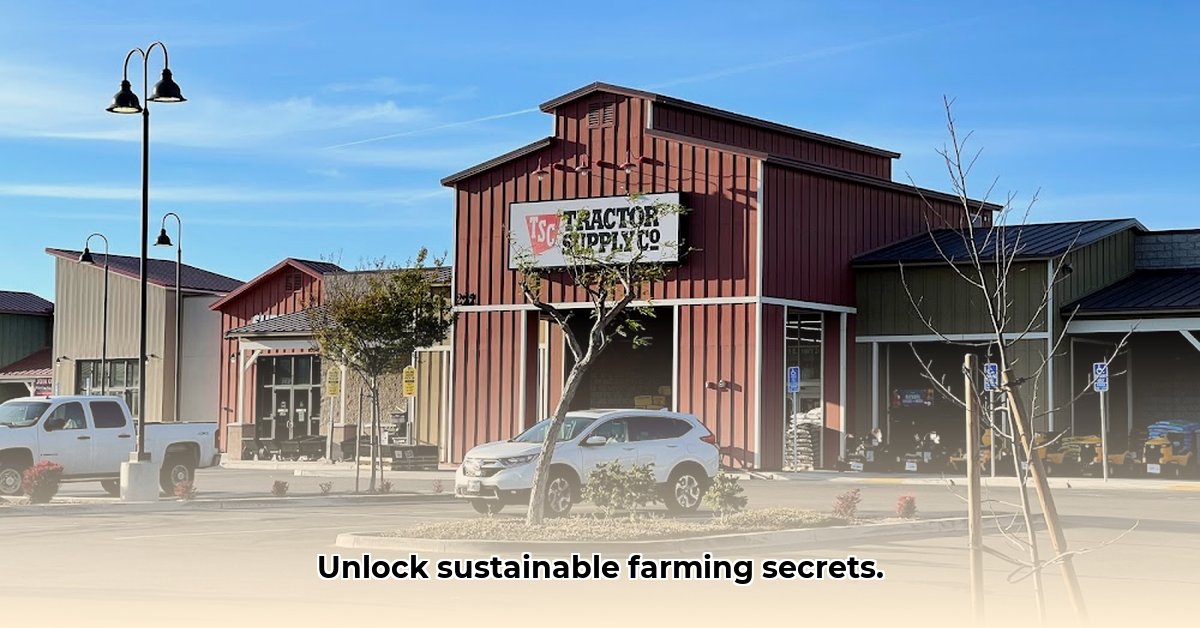
Lompoc's Agricultural Landscape: A Balancing Act
Nestled in California's fertile Central Coast, Lompoc boasts a rich agricultural heritage. Generations of farmers have cultivated this land, providing fresh produce for our tables. However, maintaining this tradition while embracing environmentally conscious practices presents unique challenges. This isn't simply about profit; it's about the future of our food and the health of our land. Tractor Supply, a familiar presence in Lompoc, plays a role in this story, but is it adequately supporting the community's pursuit of sustainable agriculture? This article explores Tractor Supply's current contribution, identifies existing limitations, and proposes actionable steps for a more sustainable future. For more on hay supplies, check out this resource.
Tractor Supply's Current Offering: A Convenient Starting Point
Lompoc Tractor Supply serves as a one-stop shop for many local farmers and gardeners, offering essential supplies like seeds, tools, fertilizers, and other farming necessities. Its accessibility is a significant advantage, providing convenience for those seeking basic farming supplies. But does this convenience translate to support for sustainable practices? This is where the narrative becomes more complex.
The Sustainability Gap: Addressing the Need for Specialized Products
While Tractor Supply provides basic necessities, a significant gap exists between its current offerings and the needs of truly sustainable farming practices. The selection of organic seeds, for example, may be limited, and eco-friendly options for pest control or irrigation might not be comprehensive. Many farmers require access to a wider range of organic seeds, water-efficient irrigation systems, and environmentally friendly fertilizers to minimize their environmental impact. This discrepancy highlights a crucial area for improvement. "The absence of these products poses a significant hurdle for farmers committed to sustainable methods," explains Dr. Emily Carter, Agricultural Sustainability Expert at UC Davis. "This is not necessarily a failure of Tractor Supply, but rather a reflection of the broader challenges in scaling sustainable agriculture."
Case Study: Maria's Journey Towards Organic Farming
Consider Maria, a local farmer transitioning her farm to organic practices. She needs a reliable supply of certified organic seeds in sufficient quantities. Sourcing these materials can prove challenging, forcing her to travel further, adding to costs and time commitments. This highlights the need for readily available sustainable options closer to home. This direct experience sheds light on the practical difficulties faced by many local farmers aiming for sustainability.
Actionable Steps: A Collaborative Approach to a Greener Future
Bridging the gap between Tractor Supply's current offerings and the needs of Lompoc's sustainable agricultural community requires a collaborative effort. The following actionable steps outline the roles and responsibilities of various stakeholders.
For Lompoc Tractor Supply:
Conduct thorough community needs assessments: Engage directly with farmers through surveys and focus groups to identify the most in-demand sustainable products and services.
Expand the inventory of sustainable products: Increase the range of organic seeds, biofertilizers (fertilizers derived from natural sources), and water-saving irrigation systems. Establish partnerships with local sustainable suppliers.
Host workshops on sustainable farming practices: Become an educational hub, inviting experts to share knowledge and empower farmers. Partner with local agricultural extension services.
For Local Farmers:
Support sustainable choices: Prioritize sustainable products from Tractor Supply, even if the selection is limited, to demonstrate demand to the store.
Communicate product requests directly: Engage with Tractor Supply to clearly communicate the specific sustainable products needed.
Explore cooperative purchasing: Pool resources with other farmers to increase purchasing power and incentivize Tractor Supply to stock higher-demand items.
For Consumers:
Demand sustainability: Make your preferences known to Tractor Supply and support businesses that align with your values.
Seek local options: Prioritize local farmer’s markets and farm stands when possible to support sustainable farming practices directly.
For Local Government:
Invest in sustainable agriculture: Provide incentives such as grants or tax breaks for farmers to adopt sustainable practices, and reduce the financial barriers to eco-friendly methods.
Foster partnerships: Collaborate with Tractor Supply and other stakeholders to implement educational initiatives and support programs.
Conclusion: Building a Sustainable Agricultural Future Together
Lompoc Tractor Supply has the potential to be a cornerstone of sustainable agriculture in the region, but its role needs to evolve. A collaborative effort involving farmers, consumers, the local government, and Tractor Supply itself is crucial. By working together, we can build a more robust and sustainable agricultural system that nourishes our community and safeguards our environment. The journey towards a greener Lompoc requires continuous adaptation and a shared commitment to a sustainable future.